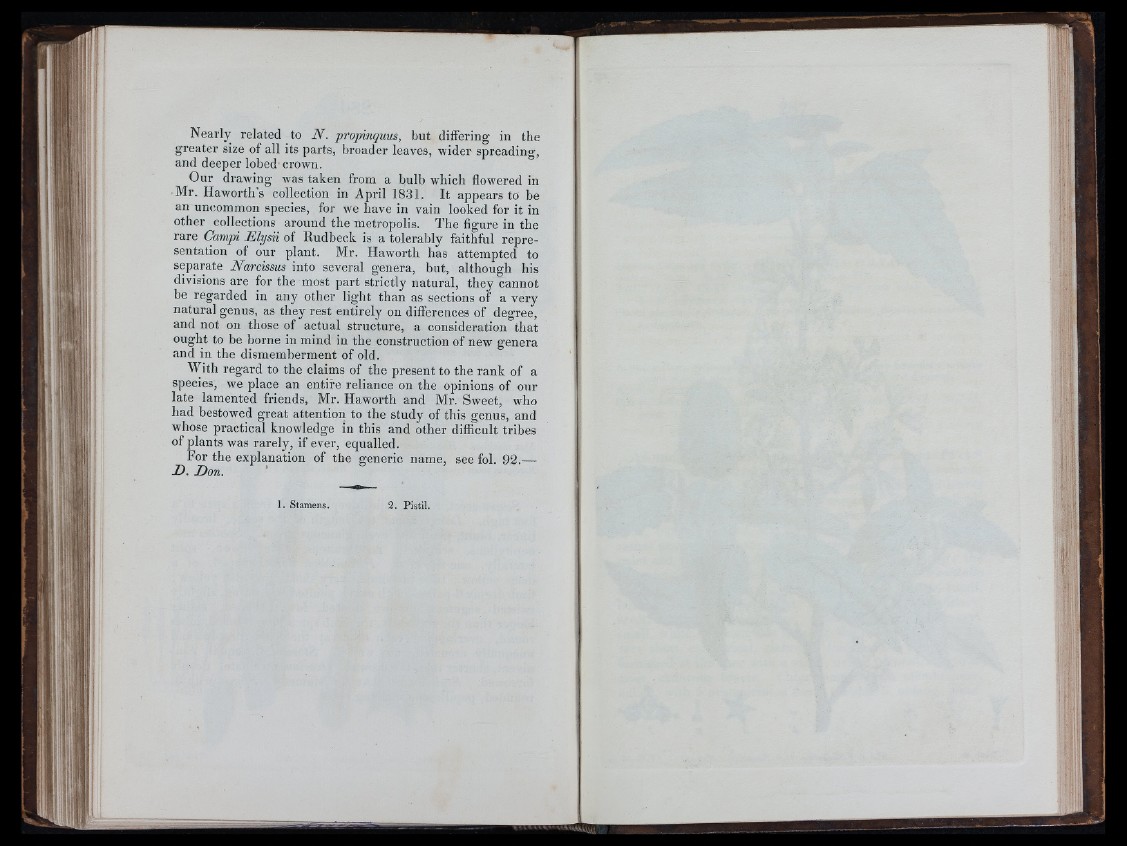
Nearly related to N . propinquus, but differing in the
greater size of all its parts, broader leaves, wider spreading,
and deeper lobed crown.
Our drawing was taken from a bulb which flowered in
Mr. Haworth’s collection in April 1831. It appears to be
an uncommon species, for w'e have in vain looked for it in
other collections around the metropolis. The figure in the
rare Campi Elysii of Rudbeck is a tolerably faithful representation
of our plant. Mr. Haworth has attempted to
separate Narcissus into several genera, but, although his
divisions are for the most part strictly natural, they cannot
be regarded in any other light than as sections of a very
natural genus, as they rest entirely on differences of degree,
and not on those of actual structure, a consideration that
ought to be borne in mind in the construction of new genera
and in the dismemberment of old.
With regard to the claims of the present to the rank of a
species, we place an entire reliance on the opinions of our
late lamented friends, Mr. Haworth and Mr. Sweet, who
had bestowed great attention to the study of this genus, and
whose practical knowledge in this and other difficult tribes
of plants was rarely, if ever, equalled.
For the explanation of the generic name, see fol. 92.—
D. Don.
1. S tam e n s . 2 . P i s t i l .
ft
£